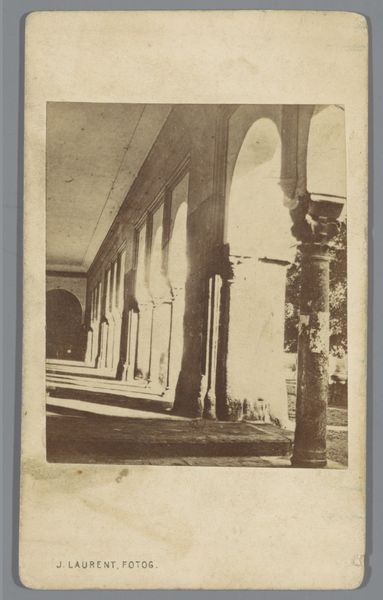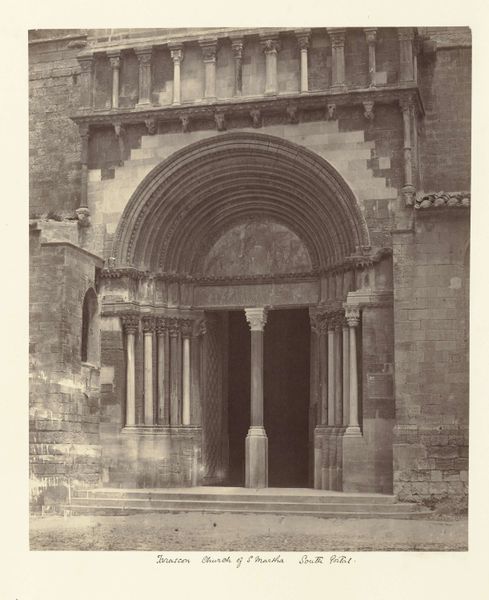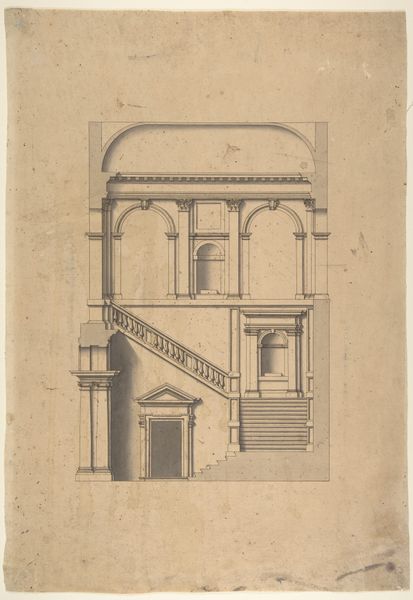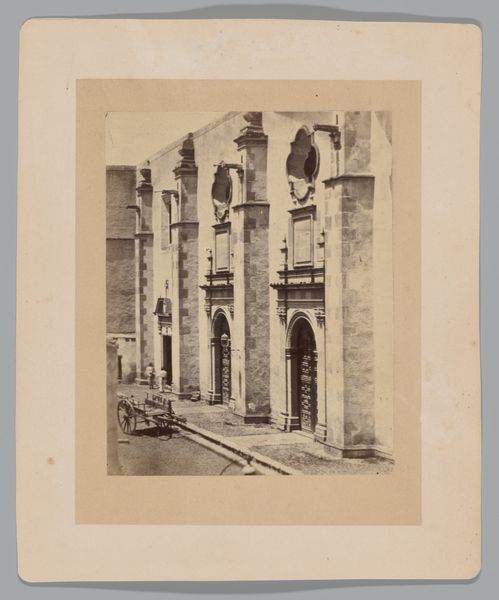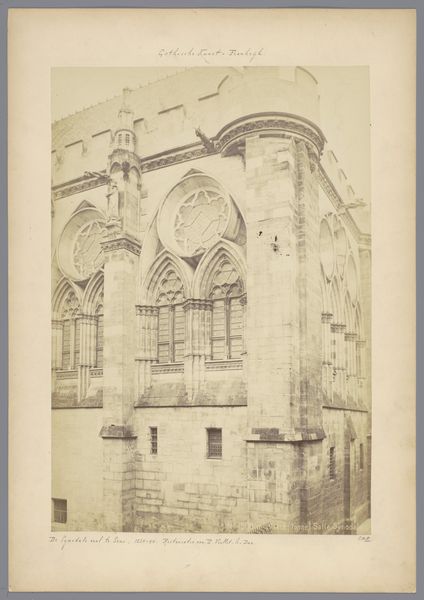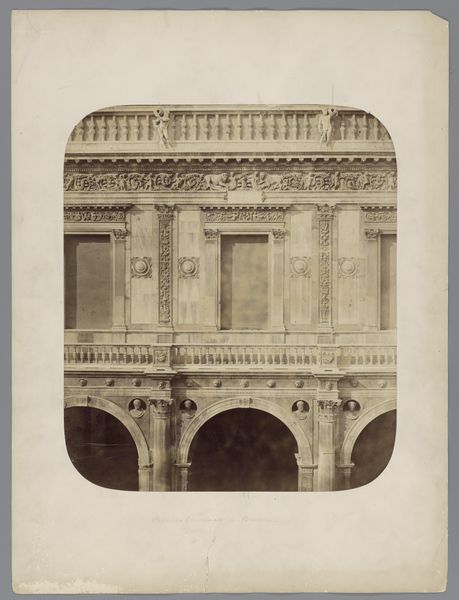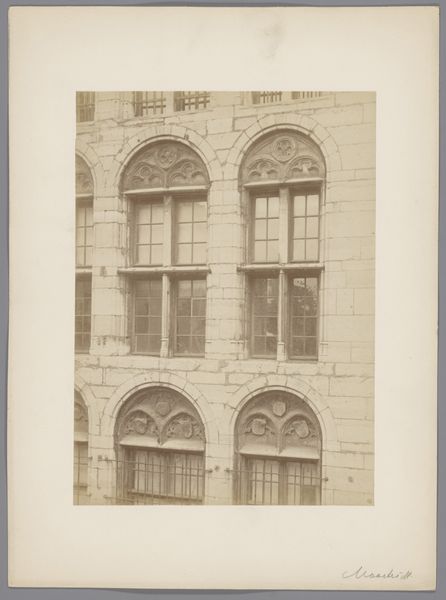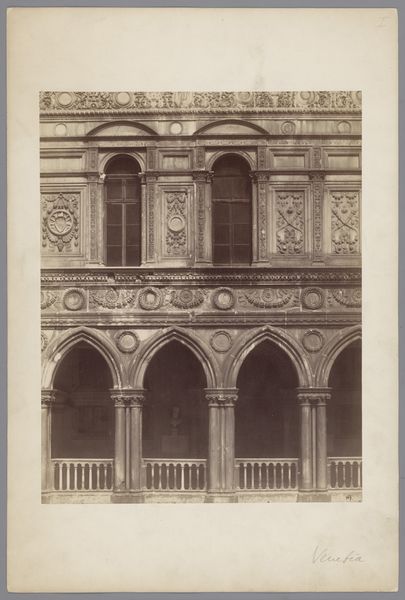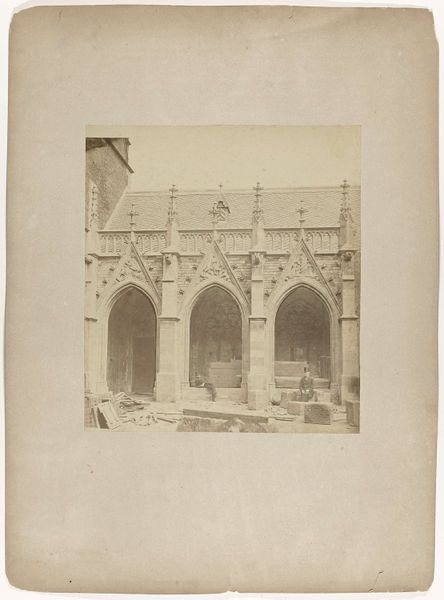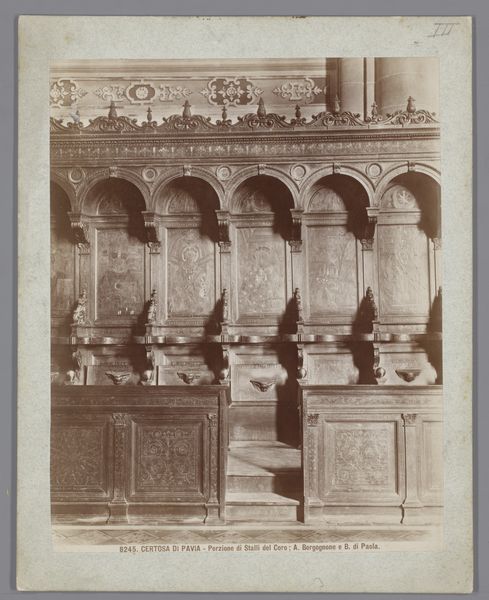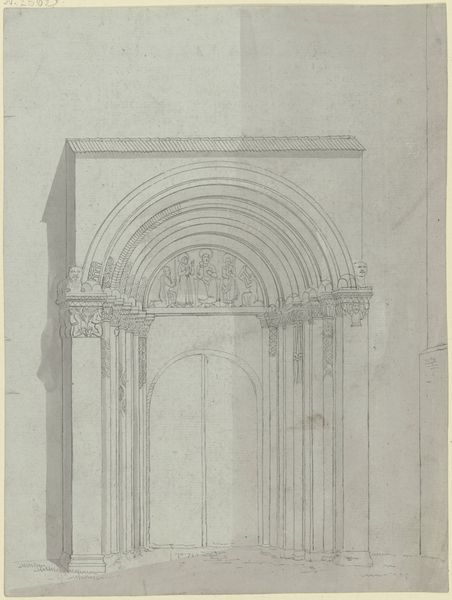
Dimensions: height 358 mm, width 278 mm
Copyright: Rijks Museum: Open Domain
Curator: I'm immediately struck by the weight and density in this etching, "Deel van de façade van Chateau du Pailly". It’s rendered by Auguste Alexandre Guillaumot in 1861, capturing a fragment of architecture. What are your first impressions? Editor: There's a stillness and quiet grandeur here. The shadows define the space, lending it a dramatic weight despite being, simply, a depiction of an architectural feature. It speaks volumes. Curator: Absolutely. Looking through an intersectional lens, we might see how the neoclassical style employed here became a visual language of power, linking back to specific class structures and their control of space and narrative during that era. The meticulous detail elevates, really enforces, that power. Editor: Indeed. The repeated lion head motifs serve not just as ornamentation, but as symbols of courage and authority. Notice how they're strategically placed at load-bearing junctures, visually reinforcing the strength and stability—attributes tied closely to ideals of leadership. Curator: Right, and it also reinforces the concept of inherited privilege. Who gets to literally build their face into the foundations? It raises questions about whose history is literally etched in stone versus those excluded from that process of monumentalization. Editor: And yet, it’s interesting to consider that as an etching, a print, it inherently invites wider circulation of this powerful image. Does this somehow dilute the statement of power that you identify? Is this image made for those inside or outside its walls? Curator: I find that tension quite interesting. Maybe Guillaumot sought to subtly question those dynamics even as he documented it so meticulously. Prints have often served as disruptive media by disseminating ideas, as was true during the reformation. Editor: It really is a beautifully rendered scene and I like to imagine how powerful and reassuring these motifs might have been to anyone associated with the Chateau du Pailly. Curator: A testament to how historical and social forces can really shape something as seemingly static as a building. Editor: Ultimately, a study of cultural values expressed through the careful rendering of stone.
Comments
No comments
Be the first to comment and join the conversation on the ultimate creative platform.
